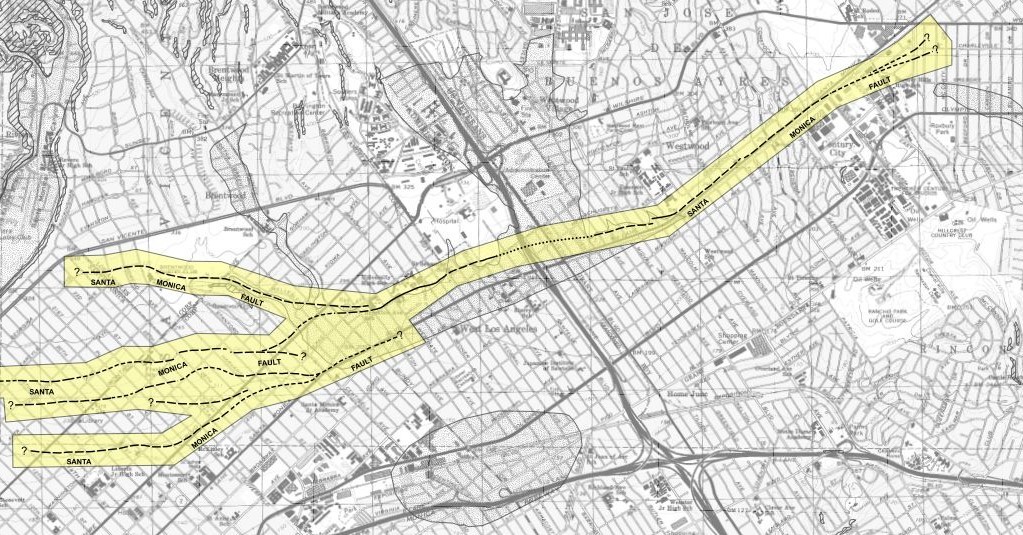BEVERLY HILLS—The California Geological Survey released a new map this week detailing an update to the Santa Monica fault line found beneath Rodeo Drive in the city of Beverly Hills.
The map is an updated, finalized version of a similar one released in 2017. According to the study, the Santa Monica Fault Zone could extend eastward through Century City, through Beverly Hills parallel to Santa Monica Boulevard to the border of the city of West Hollywood.
The line was updated to stretch a mile northeast, under the central district and the city center. The Santa Monica fault starts at the southernmost tip of Malibu, right on the beach, and snakes it way under the city to a location a little south of Brentwood. It then travels through Santa Monica Boulevard, worming past the I-405 and Westwood before coming to a stop in central Beverly Hills.
According to geologists, the fault has the capacity to create a magnitude-7 earthquake in the area. Geologists suspect the fault has remained dormant for many years, estimating that the last earthquake caused by the fault was 1,000 to 3,000 years ago.
The fault is expected to only move 1-2 millimeters a year, where the chances of the fault starting a massive earthquake are very low.
The city of Los Angeles adheres to the guidelines of the Alquist-Priolo Earthquake Fault Zoning Act, which was released in 1972. According to the California Department of Conservation, the act “provides a mechanism for reducing losses from surface fault rupture on a statewide basis.”
The intent of the act “is to ensure public safety by prohibiting the siting of most structures for human occupancy across traces of active faults that constitute a potential hazard to structures from surface faulting or fault creep.”
“Safety and resiliency in a disaster is one of the City’s highest priorities,” said Mayor Lili Bosse. “The entire region is an active earthquake zone. We should always be prepared!”
According to a press release issued by the city of Beverly Hills, the City is currently reviewing a revised study released by CGS and will be contesting the findings.
For additional information on the CGS study, contact 310-285-1119 (Building/Safety) or emergency preparedness 310-285-1014 (City Manager’s Office).






